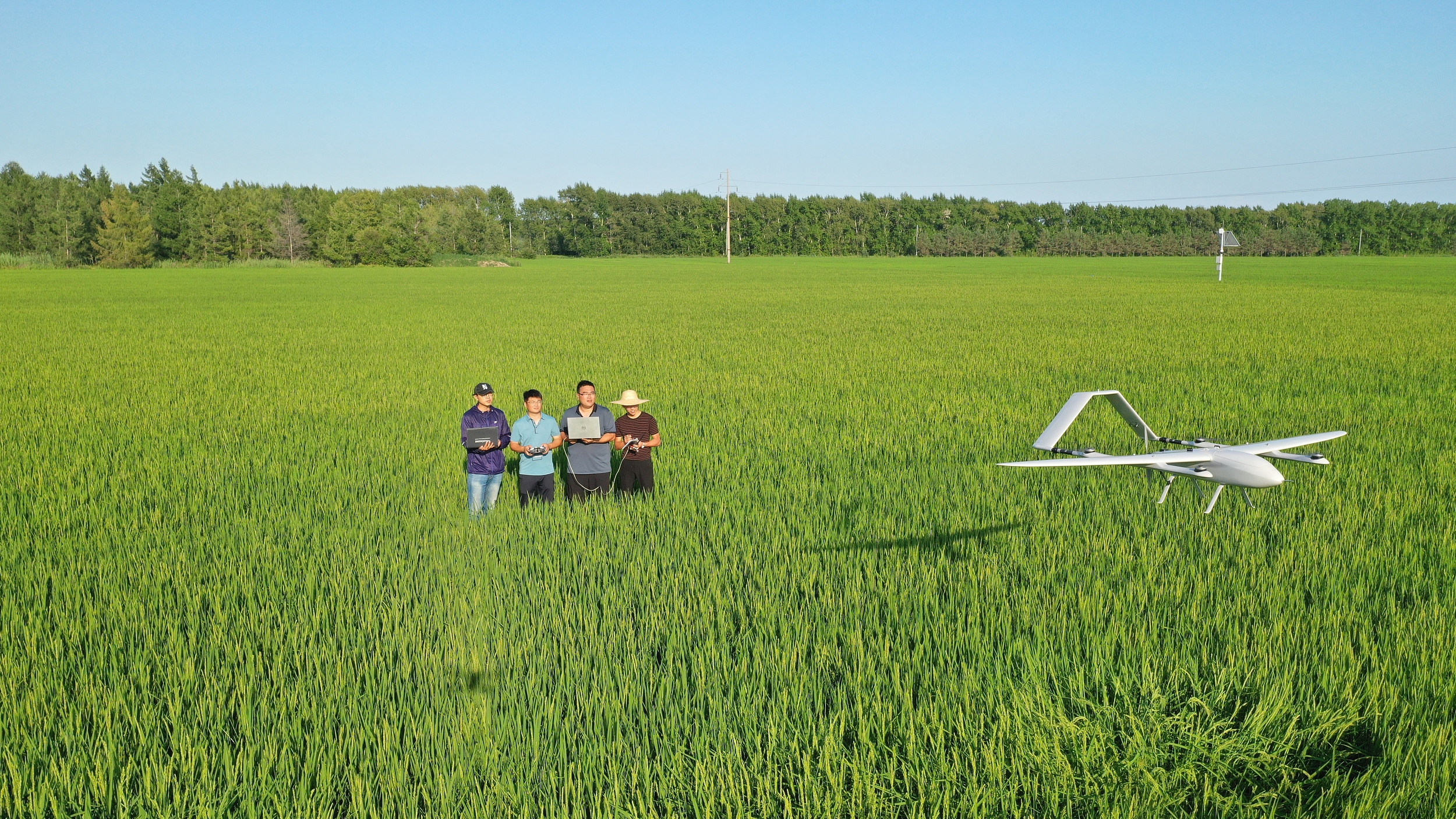Old Industrial Base of Heilongjiang Gets Digital Makeover

Researchers operate a hyperspectral drone at a smart agriculture demonstration zone in Heilongjiang province. The drone is like the CT?examination in a hospital, which can take photos of farmland, and help spray fertilizer precisely. (PHOTO: VCG)
By?LI?Liyun?&?CHEN Chunyou
Digital technology is regarded as an important engine to transform the industrial development model. One prime example of this modernization is in Heilongjiang province, where the old industrial base of northeast China has embraced the digital economy as its "No. 1 project" in the province's development, impacting all walks of life. Digi-tech brings a smart edge to Heilongjiang's traditional industries, taking its industrial structures into the fast lane.
Advantages in developing digital technology
The optical network has basically covered the whole province, and Harbin, the capital city of Heilongjiang, has become a major national Internet direct connection point. A total of 30 big data centers have been established, with 40,000 standard racks available in the province.
Digital technology industries, such as artificial intelligence, cloud computing, Internet of Things and big data have continued to develop, and an electronic information manufacturing industry pattern, featuring automotive electronics, sensitive devices, semiconductor materials, information terminals and applied electronics has taken shape. Industrial parks for satellite manufacturing and application, BeiDou Navigation Satellite System and geographic information have also been established.
Most notably, Heilongjiang is home to 78 institutions of higher learning, and many other research institutions, which have strong research and innovation capabilities in the field of digital economy.
Prosperity in smart farming
In the past, Heilongjiang was characterized by a labor-intensive farming model, which has given way to smart farming. With the support of modern equipment and technologies, farmers have embraced a new era of farming.
"At present, we are carrying out the experiments and explorations of smart agriculture, with 34 university-industry partners providing technical support," said Jiang Hao, vice director of the rice office of Qixing Branch, Heilongjiang Agriculture Co., Ltd.
Qixing Branch is located in the Three River Plain, one of the important grain-producing areas in China. In recent years, this branch has vigorously promoted the application of digital agriculture and built China's earliest batch of smart farms, which include 20 small weather stations and 20 sets of groundwater monitoring devices, covering a total area of 1.26 million mu (about 84,420 hectares) of farmland.
Based on the Internet of Things, big data and other technologies, the research on seedling breeding and transplanting is accelerating. The entire process of management of land and the harvest is unmanned.
Deep integration with real economy
In the automatic stacking workshop of the generator punching sheet at Harbin Electric Machinery Factory Co., Ltd.,the stacking process of the transformed production line doesn't need the involvement of workers, yet its working efficiency is three times as high as before.
"A long time ago, our company's researchers used information technology to design and develop large power generation equipment," said Qin Daqing, deputy chief engineer of the company.
"During the process of design, manufacturing, testing and other R&D stages, a lot of data was produced, but the data was scattered and like a separate 'island'. With the improvement of cloud computing capacity, the data on the 'island' is gradually linked to a large database. What used to take a week to compute now can be done in a morning," said Qin.
In addition to agriculture and industry, digital technology is also changing Heilongjiang's education, finance, medical care and many other industries. According to Heilongjiang's Digital Economy Development Plan During the 14th Five-Year Plan Period, by 2025, about 10 percent of the province's GDP will come from the added value of core industries in the digital economy, and the digital economy will achieve leapfrog development.







